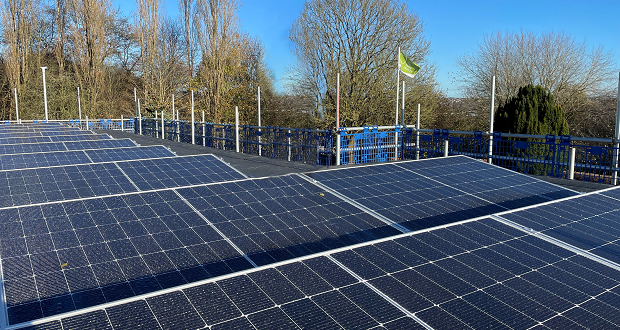Council carbon emissions slashed by almost 70%

A council’s carbon emissions have fallen by 68.4 per cent since measurements began more than 15 years ago.
And efforts by Newcastle-under-Lyme Borough Council have accelerated within the last 12 months as a switch to a biodegradable and fossil-free fuel for its heavy goods vehicle fleet has cut emissions by 35 per cent year-on-year.
The headline figures feature in a new report noting the latest progress in decarbonising the council’s operational buildings and fleet – a major part of its updated Sustainable Environment Strategy – through reducing reliance on fossil fuels, reducing carbon and other damaging emissions, minimising waste and increasing recycling as well as offsetting residual emissions.
The strategy, a landmark document setting out the council’s commitment to the sustainable environmental future of Newcastle-under-Lyme, promotes ambitious plans to achieve net zero across its operations and estates by 2030 at the latest while supporting the wider borough to do so by 2050.
Using Hydrotreated Vegetable Oil (HVO) for recycling and waste vehicles – a low-carbon fuel made from renewable materials like rapeseed and sunflower oil which can reduce a vehicle’s carbon footprint by up to 90 per cent compared to diesel – is mostly responsible for the largest fall in carbon emissions in one year so far.
Newest data shows that the borough council produced 1,308.2 tonnes of carbon through its operations and estate in 2023/24 compared to 2,010.9 tonnes in 2022/23. Emissions have seen a 68.37 per cent drop in total since 2009/10 when the council first started measuring its own carbon footprint.
David Hutchison, Cabinet member for Sustainable Environment, said:
When the council declared a climate change emergency in 2019, it acknowledged that there is a real need to act now and plan in how to tackle the environmental threats posed by climate change, for borough residents now and in the future.
At the time, we pledged a commitment to achieve a sustainable and net zero council by 2030. Our subsequent and evolving Sustainable Environment Strategy – setting out our ambition to be an exemplar local authority in both caring for and enhancing our environment – includes a wide range of linked initiatives which are monitored very closely and are clearly having a measurable impact.
Most recently, we’ve installed more than 100 solar PV panels on the roofs of four council buildings which are projected to generate 46,500 kWh of green energy – saving more than 10 tonnes of carbon dioxide emissions each year – meaning that it’s possible to reduce our reliance on grid electricity entirely, with significant savings on day-to-day running costs being an added benefit.
Adapting to and mitigating the effects of climate change means changing the way we do things for the long-term benefit of the borough. Five years later, we’ve already made significant progress on our journey and have received confirmation from independent experts that our 2030 target can be realistically met through a variety of planned measures and changes which can be adopted at scale and pace over the next few years. We’ve achieved so much during the past few years and I’m really looking forward to seeing future projects come to fruition.”
Other actions taken this year include purchasing four additional electric Streetscene vehicles, a trial of electric mowers and chainsaws, the introduction of a grassland management strategy boosting local biodiversity, planting more carbon capture trees – bringing the total planted so far to almost 30,000 – and delivering carbon literacy training for council staff.
The council is awaiting the outcome of a strong application for £3.8 million of decarbonisation funding for Jubilee2 while Brampton Museum is currently applying for National Lottery funding for net zero infrastructure upgrades.
Capital funding requirements relating to the Sustainable Environment Strategy have been built into the council’s capital programme.

